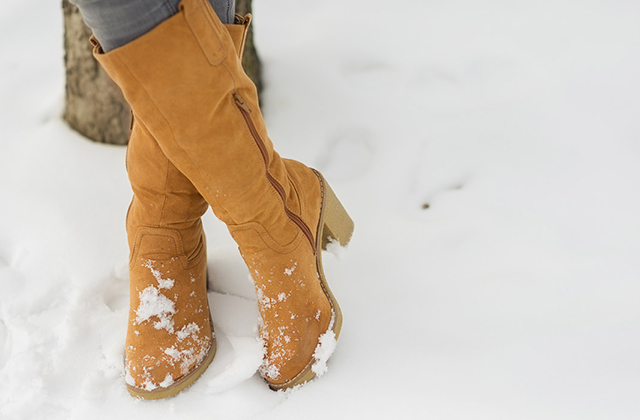UGG boots for men Dex Slippers Chestnut are the perfect slipper which ensures your feet are just as warm as they are comfortable.
- Buy the best you can afford. This may seem obvious, but this is not an area on which to be tight-fisted. When walking, your boots are the only thing that you will certainly wear l day long – and you get what you pay for. Having said this, don’t let price sway you. Fit and comfort are the most important things – and a less expensive boot may be just right!
- Two-season boots are suitable for general country walking in Summer and Autumn, probably the most popular time for most people. They are usually lightweight and more flexible than you’d imagine. In fact, some of them are just like wearing a pair of shoes but they do give essential ankle support. If the shop you’re using doesn’t know what a two-season boot is – shop elsewhere.
- Three-season boots can be used generally all year round for country walking and for high fell walking. They can also be used for mountain walking during late Spring, Summer and early Autumn but are perhaps not durable enough for Winter mountain work.
- Leather boots, which up to a few years ago were the only real choice for hikers, are probably more durable than boots made from fabric, although heavier, and good fabric boots are reinforced anyway. Many fabric boots are made of heavy Cordura nylon and have leather patches at wear points. Some (my own included) are also further strengthened with Kevlar. Believe me, durability of fabric boots today is not a problem! Too, many boots are now lined with waterproof membranes such as Gore-Tex, so soggy feet are a thing of the past.
- I would recommend a pair of lining socks next to the skin. These are thin, usually made of soft cotton or cotton/wool mix, have flat seams and very comfortable. Many people today think them unnecessary but I disagree – and I never get blisters! Then a good bet is loop pile socks over the top of these – they will cushion the feet and are supremely comfortable. Some also have reinforced and padded heel and instep sections that your feet will thank you for. Don’t forget to wear them when trying boots on – it may seem obvious, but the obvious is sometimes overlooked!
- As to fit, boots must be wide enough so as not to feel tight, especially around the base of the toes. It’s no use thinking that the boot will stretch to fit eventually – maybe it will but, by then, not only will its durability be affected but you will have had more blisters than you ever had in your life!
- When the boot is laced correctly, the toes should not press into the front of the boot when the foot is pushed forward, as it is when going downhill. This might not be a problem on a very slope but, if you’re descending a mountain slope for three hours you will be virtually crippled by the finish. Of all the things to check on boot fit, this is probably the most important.
- The soles of the boot should also be considered. They must be flexible enough to accommodate some bending of the foot when walking, but not so flexible that they don’t give your foot the support it needs. Three-season boots – the type I use all the time – can feel strange when first used as the sole has generally little ‘bend’ in it and has a curve that gives a ‘rolling’ action to your step. Believe me, once you become accustomed to this it saves a lot of effort.
- Always clean your boots after a walk – don’t toss them into a closet and forget about them! Leather boots especially will repay a little care by giving you years of use. It’s especially important to clean leather boots if you have been walking in areas containing peat – the acid present in the peat can rot leather very quickly. Wash them off, let them dry naturally and treat them with a special walking boot conditioner – not shoe polish. If they do get really soaked never dry them in front of a fire or on a heater! The leather may well crack and your boots will be ruined! Instead, stuff them with old newspaper and leave them to dry somewhere well-ventilated. When they’re dry, treat them with conditioner before use.
- Fabric boots are easier to care for. Clean off any mud or soil and leave them to dry naturally, as you would with leather. Apart from this, treat them with a water-repellent spray now and again – if they are membrane-lined it won’t make any difference as to your feet getting wet (they won’t) but it saves the material from being always waterlogged and will extend the life of the boot.
Steve Dempster is actively involved in running several websites and spends part of his working day creating short, informative articles such as the one above. Get more info on walking in the UK at the Countrywalkers [http://www.countrywalkers.co.uk/index.html] website!
Article Source: https://EzineArticles.com/expert/Steve_Dempster/58705
Article Source: http://EzineArticles.com/342292

